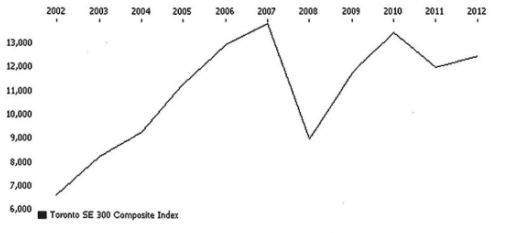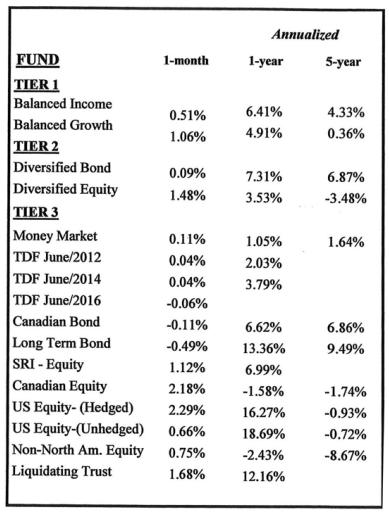来自加拿大代写的顾客授权发布的investment analysis and portfolio management,FNCE4007作业要求片段,我们不会发布FNCE4007的answer在网站,我们曾经写过FNCE4007及相关的investment analysis and portfolio management写过很多作业,考试,如果你也需要代写这个课程的作业请联系客服WX:QQ 5757940 ,代写人的代写服务覆盖全球华人留学生,可以为CA的学生提供非常准时精湛的服务,小作业assignment代写、essay代写享适时优惠,project、paper代写、论文代写支持分期付款,网课、exam代考预约时刻爆单中赶紧来撩。

2012年6月25日,约翰·吉尔伯特教授向化学系主任宣布,他打算于当年12月31日从安大略省伦敦的西部大学(西部)退休。2012年12月5日,他收到西部人力资源部养老金集团的一封邮件,要求他进来讨论如何管理他的养老金,包括提供养老金收入和投资余额。西方的养老金计划被描述为。。。
Task
Professor John Gilbert announced to his chair in the Department of Chemistry on June 25, 2012 that he intended to retire from Western University (Western) in London, Ontario on December 31 that year. On December 5, 2012, he received a message from the Pensions Group in Western’s Human Resources Department asking him to come in and discuss how he wanted to manage his pension fund, both in terms of providing pension income and investing the balance. Western’s pension plan was described as a “defined contribution plan” where amounts are contributed to a fund for the employee’s retirement from
1. Deductions from salary during the term of employment,
2. Employer’s contribution during the same period and
3. Rates of return on the investments in the fund that, when positive, increase the value of the fund and decrease when the earnings are negative.
The employee chooses the mix of investment options for his or her portfolio from a list of options. Upon retirement, the employee receives his pension income from his fund; the employer has no further responsibility to contribute to the employee’s pension plan account.
John met with Anne Samson of the Pensions Group and attended a seminar for retiring employees where he discussed the situation with some of his retired colleagues. Anne asked, “How much income do you need?” followed by “In addition to your pension income, what other income will you have?” John did not know the answer to either of these questions but indicated to her that he would come back with answers within the next couple of weeks. Anne suggested that he should develop an investment plan that included all his financial assets, both inside the pension fund account as well as bank and other savings accounts and any securities held in either his or his wife’s name, and that as part of that plan he should understand the risks involved and incorporate these risks into his planning process.
Background
John Gilbert was born outside Woodstock, Ontario in 1947 and attended a one-room school for the first eight years. After high school, he went to the University of Guelph where he earned a Bachelor of Science degree before heading to Western to do a Masters in Chemistry which he obtained in 1972. He then
worked for a pharmaceutical company for 12 years, largely extending the research he undertook on his thesis. His work was highly theoretical, more oriented to a research institution than a commercial pharmaceutical firm, but he was valued by his employer as a consultant and participant on many projects and a possible source of breakthrough products. When this company was acquired by another drug company, the new employer did not see these benefits, and John was able to negotiate a generous settlement upon his departure. He used the funds to finance a Ph.D. from the University of Toronto where he pursued his research further and upon graduation accepted a faculty appointment at Western in 1987.
Gilbert’s wife, Joan, was born in 1948, in London, Ontario. She met John while visiting for a weekend at a friend’s home in Guelph. She attended a community college program before entering the business world. They married in 1973, but she stayed at home after the birth of their first child in 1975 and their second in 1977. Joan went back to work as an administrative assistant in a bank in Toronto when the youngest entered Grade One in 1983 while John was studying at the University of Toronto. When John finished his Ph.D. in 1987 and they moved to London, she undertook to help her mother look after her father who was ill and subsequently died after a long period when he was incapacitated. After that, she volunteered at the Cancer Society almost full time. Joan, an only child, inherited the family cottage in Grand Bend, Ontario on Lake Huron and a substantial investment portfolio when her mother died in 2004.
Their two children progressed through the school system and completed their university education. Their older child, a daughter, earned a B.Sc. in Nursing Science at Queens University in 1997 while their son earned a Bachelor of Commerce degree in 1999 at Dalhousie University. Both now lived away from home, were married and each had one child.
How much do you need?
John and Joan tackled the “How much do you need?” question by reviewing their expenditures over the past few years, adjusting them for his change in situation to a retired person and projecting them in budget type format. The details are presented in Exhibit 1.
John and Joan own a condominium on the eighth floor of a high rise building in the south end of London. The facility had an exercise room and a party room and a value estimated at $275,000. The monthly fees of $475 and the annual property taxes of $4,250 were the major expenses associated with owning the condo.
The Grand Bend cottage was the congregating place for the whole family, where the grandchildren played on the beach and in the water, and a source of total enjoyment. The assessment for property tax purposes based on market values had gone up substantially over the past few years as waterfront properties increased in value and was currently set at $400,000 and the resulting taxes at $3,325.
John and Joan had discussed their retirement “wish list” extensively during recent years — travel was the biggest item on the list. They were actively considering an African safari in 2013, the cost of which amounted to over $6,000 each.
After considerable discussion, John and Joan assembled their budget with a $12,000 planned expenditure on travel.
John was surprised when he put it all together and realized that the budget amounted to over $63,000 for 2013 although he had not included a major expenditure for an unexpected home repair or new car purchase. And, of course, this was all before income taxes.
Western’s health insurance program, considered to be one of the most generous available, covered faculty and their spouses after retirement. Emergency health care while travelling was a critical part of this coverage and, as John discovered, opened up a lot of adventures that many others could not afford because of the high cost of the health component of travel insurance.
What income?
John listed his and Joan’s set of assets at current market values on December 11, 2012 as a starting point to determine what his income opportunities were, as follows:
| Western University Registered Pension Fund Investment Accounts — Securities firm | $ 1,057,000 |
| a) John: 75% Canadian stocks, 25% U.S. stocks | 225,000 |
| b) Joan: 50% Canadian bonds, 50% U.S. stocks | 305,000 |
| Tax free savings account (TFSA) | 42,000 |
| Chequing account, Joint | 1,075 |
| Savings account, Joint | 49,000 |
| TOTAL | $ 1,679,075 |
In addition, Joan owned the cottage in Grand Bend with an appraised value of $400,000. Their condo, owned jointly, was valued at about $275,000.
John estimated that his Canadian and U.S. stocks paid dividends of about 3.0 per cent annually while the bonds paid interest of about 4.0 per cent on average.
John pointed out that he would receive Canada Pension Plan (CPP) benefits of about $960 a month in 2013. John turned 65 in 2012 and Old Age Security (OAS) payments of about $500 a month for John were possible if his income for tax purposes was less than $70,000. Joan qualified in 2013 for OAS of about $250 per month.
Income Tax Considerations
John always had his income tax return prepared by an accountant, Helen McNeil, who prepared returns for a number of his colleagues. Helen advised John of the following:
1. John’s pension income from Western could be split with Joan for tax purposes, in any proportion up to 50 per cent each.
2. While the pension income that was paid out was fully taxed to John and Joan in the year it was paid out in whatever proportions they chose to allocate it to each other, the amounts earned on the balance remaining in the fund were tax free in that year.
3. Amounts earned on their personal portfolios held by a securities firm were taxed at various rates.
i. Interest earned was taxed at full rates.
ii. Dividends from Canadian corporations were taxed at a lower rate than interest.
iii. Dividends paid to Canadians from foreign corporations were taxed at full rates in Canada although taxes deducted by foreign governments on dividends distributed to Canadians were deductible.
iv. Capital gains — the positive difference between the selling price for an asset and its cost — were taxed as follows:
a) Only 50 per cent of a capital gain was taxed and that at full rates.
b) If the investor had capital losses, he could carry these losses back against taxes paid on capital gains for three years or carry them forward to offset against capital gains indefinitely.
Helen suggested that for purposes of estimating their tax obligations for planning purposes, they use a combined federal and provincial tax rate of 15 per cent of their combined incomes in 2013 as a starting point. Using that 15 per cent tax rate and the budgeted expenditures of $63,470, a before-tax income of $74,670 was necessary to cover budgeted costs and taxes.
Western’s Pension Group provided John with a schedule prepared by Canada Revenue Agency (CRA) showing the minimum percentage by age category that a person must withdraw from the pension plan. In 2013, John must withdraw at least 4 per cent of the value at January 1, 2013 (see Exhibit 2).
What are the risks? how do i manage them?
As John looked over his existing pension investment program, he realized that his decision today about how to invest the funds was a much more serious decision than in previous years. Anne gave John the Pension Group’s latest multi-year schedule showing actual one-year, three-year, five-year and 10-year rates of return to the end of 2011 on the various funds available to participants in the Western pension fund (see Exhibit 3) and an updated schedule showing similar rates of return through August 2012 (see Exhibit 4).
John was startled to see that in 2011 the Canadian equities fund lost 10.02 per cent. In 2011, his pension fund was invested 50 per cent in Canadian bonds that earned 9.58 per cent and 50 per cent in Canadian equities that lost 10.02 per cent, so on balance a loss of 0.44 per cent.
As John looked at the performance of the various funds (see Exhibits 3 and 4), he was surprised to see that the various bond funds had outperformed stocks over the past 10 years and longer. But, as Anne pointed out, this was due to the fact that interest rates had steadily fallen over the past 10 years and anyone holding long bonds realized substantial gains as their bond prices increased. She gave John a schedule of interest rates on Government of Canada bonds of different maturities over the past 10 years indicating the dramatic drop in rates to levels that were the lowest in the last century (see Exhibit 5). The major risk associated with debt issues at this time was that interest rates would rise, causing bond prices to fall and long bond prices to fall substantially. Investing in bonds with short terms to maturity with the expectation that when interest rates increased you would be ready to invest your maturing debt securities in the now higher yielding long bond issues was thought to be a risk averse strategy. One problem was that money market debt instruments were currently yielding less than 2.00 per cent annually and that was not an attractive return.
Anne also pointed out that the Canadian dollar had risen against other currencies, especially the U.S. dollar, over the past 10 years (see Exhibit 6) and that had affected the performance of U.S. stocks and other foreign issues adversely. John wondered why he should be considering securities denominated in other than Canadian dollars since his costs of living were all in Canadian dollars.
John checked out the performance of the Toronto Stock Index and the Dow Jones Index for U.S. stocks over the past 12 years and noticed with some anxiety that the Dow Jones Index of New York Stock Exchange prices had declined from a high of 14,164 on October 9, 2007 to a low of 6,547 on March 9, 2009. The market had almost recovered to its 2007 levels in late 2012, but the impact on his pension fund and his pension income of, say, a 40 or 50 per cent downturn when he had a significant proportion of his fund in stocks could be serious indeed (see Exhibit 7).
John obtained a Moody’s communication that showed the average AAA long corporate bond rate in the U.S. in December 2012 was 3.75 per cent. Moody’s is a bond rating agency and “AAA” is the highest rating with the ratings dropping to AA and A, BBB to B, CCC to C and down. A drop in rating indicates greater risk that the issuer will be able to make the required interest and principal repayments on the issue. Interest rates go up as the rating goes down.
John and Joan’s investment adviser suggested to them that there were a number of other investment options to consider, including Exchange Traded Funds (ETF’s), put and call options and other trading strategies that they could use to affect risk. He gave them some reading material describing these options.
Decision
John and Joan sat down to discuss their operating expenditures, their “wish lists” and their investment decisions. John thought that they should take the minimum from his Western pension fund in 2013, so 4.0 per cent, or about $40,000. The CPP and OAS payments should add over $20,000, and the dividends and interest on the securities held by his securities firm should take them close to their goal of $75,000. He thought they could use their savings account to cover whatever financial shortfalls, if any, they encountered through the rest of 2013.
In addition, John carried out a preliminary investigation into a reverse mortgage. He and Joan could obtain a reverse mortgage on both their condominium and the cottage for as much as 40 per cent of the market value. This could be arranged as a one-time lump sum payment or an annuity paid monthly for the rest of their lives with the loan balance only due when they died or moved from the properties. Clearly, there was a lot more work to do on this option before making a decision to take this financing, but at least it was interesting to know it existed.
With those discussions completed, John and Joan got out their travel guides and pointed to their long- awaited dream trip of a safari to Kenya and Botswana with a stopover in Capetown, South Africa with other excursions in the region. Expensive, yes! But they had looked forward to it for a long time.
Exhibit 1: John And Joan Gilbert Budgeted Expenditures 2013
| Monthly | Annual | |
| Property taxes and insurance | $4,250 | |
| Condominium fees | $475 | |
| Heat, light and water | $525 | |
| Routine maintenance | $75 | |
| Cottage taxes and insurance | $3,750 | |
| Heat, light and water | $225 | |
| Maintenance | $1,000 | |
| Groceries and household supplies | $675 | |
| Clothes | $125 | |
| Car operating, maintenance and insurance | $425 | $1,400 |
| Telephone, cable and Internet — home and cottage | $310 | |
| Newspapers and magazines | $25 | |
| Restaurants and theatre | $275 | |
| Gifts, family get-togethers | $1,350 | |
| Fitness classes, golf and other recreational activities | $175 | |
| $3,310 | $11,750 |
12 x Monthly expenses $39,720
$51,470
Travel $12,000
Total $63,470
Source: Created by case author.
Exhibit 4: Western University Managed Funds Rates Of Return By Investment Fund To August 31, 2012
Exhibit 5: Government Of Canada Interest Rates At Three Different Dates Starting With December 2012
(Stated in percentages)
| Maturity | 2012 | 2008 | 2003 | |
| 1 - 3 years | 1.13 | 3.22 | 3.48 | |
| 3 - 5 years | 1.32 | 3.45 | 4.06 | |
| 5 - 10 years | 1.62 | 3.74 | 4.66 | |
| > 10 years | 2.27 | 4.17 | 5.39 |
Exhibit 6: Value Of The Canadian Dollar To Other Currencies At Three Different Dates Starting With December 2012
| Number of Canadian Dollars to Buy | 2012 | 2008 | 2003 |
| One U.S. Dollar | 0.98 | 1.03 | 1.53 |
| One Euro | 1.31 | 1.50 | 1.64 |
| One British Pound | 1.59 | 1.99 | 2.48 |
Exhibit 7: Toronto Stock Exchange Index Chart 2002 To 2012

If you are a student from an English-speaking country, please feel free to contact us at [email protected] and we will provide you with an excellent writing service.
为什么选择代写人 代写
作为现存十年的代写服务机构,我们没有任何学术丑闻,我们保护顾客隐私、多元化辅导、写作、越来越多的小伙伴选择代写人为他们解决棘手的各类作业难题,保障GPA,为留学梦助力! 我们的客服团队及写手老师总是能第一时间响应顾客的各类作业需求,有些人即使有重要的事甚至带伤上场协助考试。Final季,忙的时候一天十几场考试还在继续坚持着,我知道,他们明明可以不用这么辛苦的…但是他们为了坚守承诺,为了另一端屏幕外的那一份期望,他们没有选择退缩、时刻为同学们提供最好的!这么有温度的代写还不添加备用一下?WX/QQ: 5757940


